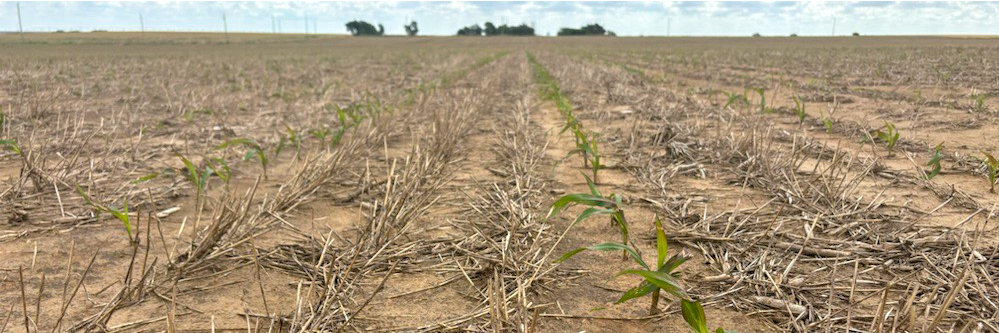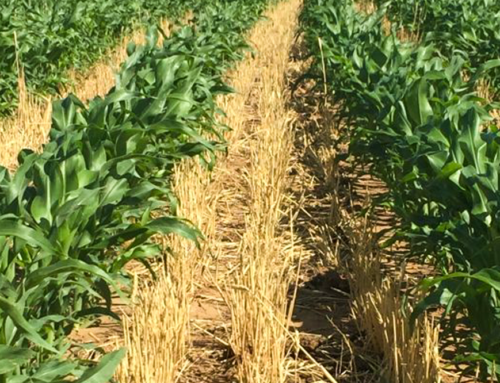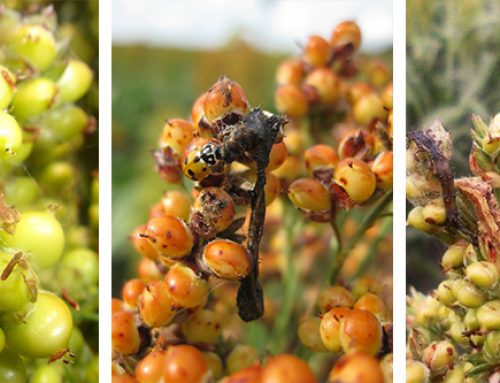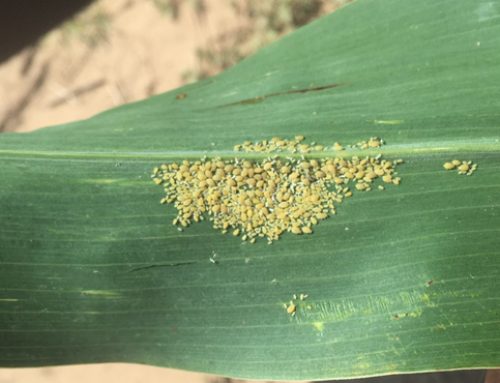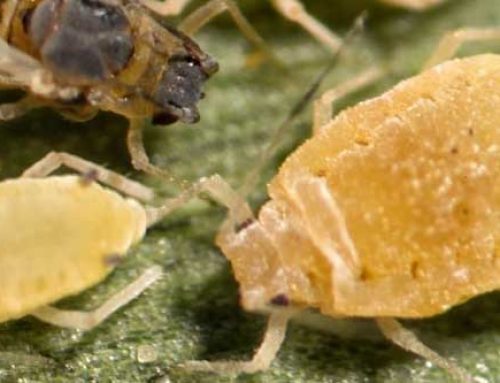Guest Post By Brent Bean, Ph.D., Sorghum Checkoff Agronomy Director
Unfortunately drought conditions through much of the Southern High Plains have led to a failed wheat crop for many growers. For some of these fields, planting sorghum for either grain or forage, may be an option as we continue into [this] growing season. However, the option of planting sorghum, or any other crop on these failed acres will largely depend on rainfall filling the soil profile with enough water to make a feasible summer crop.
When making the decision to plant sorghum, check to make sure no long lasting herbicide was applied to the wheat crop that would be detrimental to sorghum. Because of the lack of soil moisture to help break down any herbicide residue in the soil, this could be more of a problem than in previous years. There are others, but herbicides that contain metsulfuron or chlorsulfuron are of particular concern. Given the minimal wheat growth and resulting low grain production, it’s likely that any nitrogen fertilizer applied to the crop was scarcely utilized. Fortunately, this unutilized nitrogen can still be made available for the upcoming sorghum crop.
In light of this, I recommend applying minimal, if any, nitrogen prior to planting the sorghum. This will help optimize the use of existing nitrogen and promote the growth of a healthy sorghum crop. Once the sorghum is established, the decision can then be made to apply nitrogen as needed. Recent research has shown that sorghum will respond well to nitrogen when applied as late as 50 days after planting. A good rule of thumb is sorghum requires 1.1 pound of nitrogen for every bushel of grain, or 2 pounds for every 100 pounds of grain.
Sorghum seeding rate should be adjusted based on soil moisture. Normal seeding rates vary by regions, but if soil moisture is marginal, do not hesitate to decrease seeding rate by 25 percent. However, keep in mind that if sorghum planting is delayed and planted when daily temperatures are hot, tillering will typically be less. This may be a reason to maintain a normal seeding rate.
If the wheat was able to head out and make a little grain, volunteer wheat could potentially be an issue in sorghum. Unfortunately, preemergence applied herbicides such as atrazine, metolachlor, acetochlor or dimethenamid, are not that effective on controlling volunteer wheat. However, volunteer wheat can be effectively controlled by planting igrowth®, Double Team™ or Inzen™ sorghum hybrids, and then using ImiFlex™, FirstAct™ or Zest™ herbicides post emergence. Be sure and use the correct herbicide with the appropriate hybrid.
—
We are here to help on understanding sorghum and other agronomy needs!
If you have questions about sorghum, contact a local Crop Quest Agronomist. We will be glad to assist you with these important management decisions..
